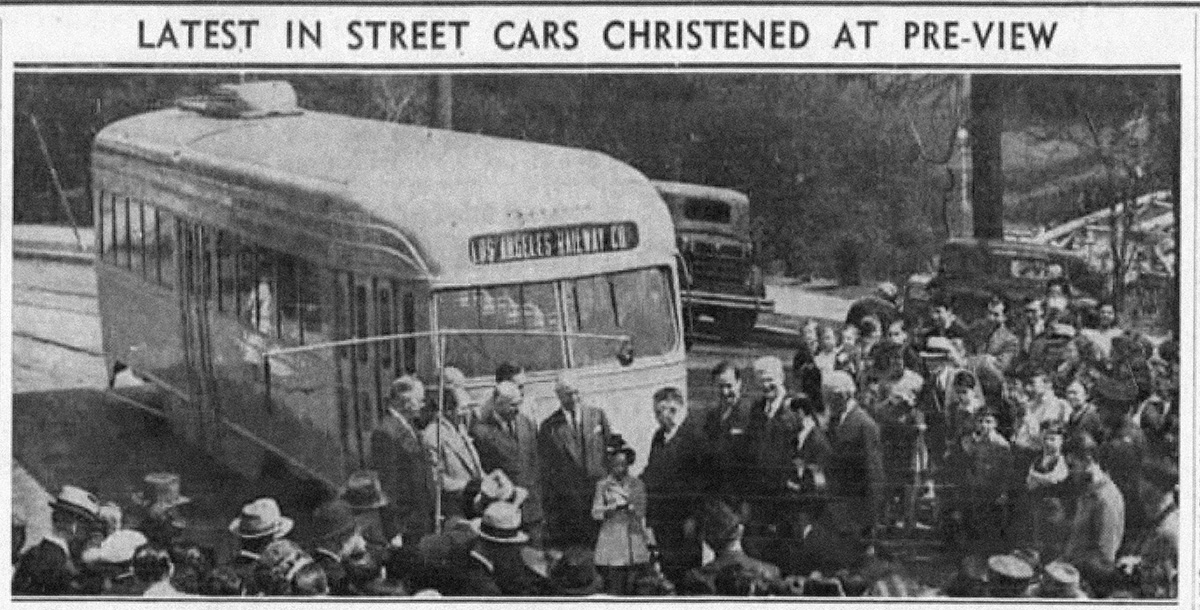
In a previous post, Shirley Temple’s 1937 “christening” of the Los Angeles Railway Company’s street car was detailed. A recent acquisition has made necessary a follow-up!
From the L.A. Times on March 22, 1937:
Standing at the prow of the ultra-modern Los Angeles Railway streamlined street car, Shirley Temple, tiny screen star, yesterday accepted the first fare from Mayor Shaw. Photo shows christening at Hollenbeck Park during preview of noiseless car. City Attorney Chesebro, Byron Hanna, Chamber of Commerce president, Lucius Storrs, line chief, and others were present.…This new vehicle is public transportation’s real challenge to the competition of the private automobile.
The caption for the included photo below:
COMFORT DOMINANT NOTE IN CAR INTERIORS
Deep leather cushioned seats assure a new standard of passenger comfort in the new streamlined street cars. Overhead straps are replaced by stainless steel handholds. Other improvements include brilliant but glareless illumination. The seating capacity of the cars has been greatly increased.
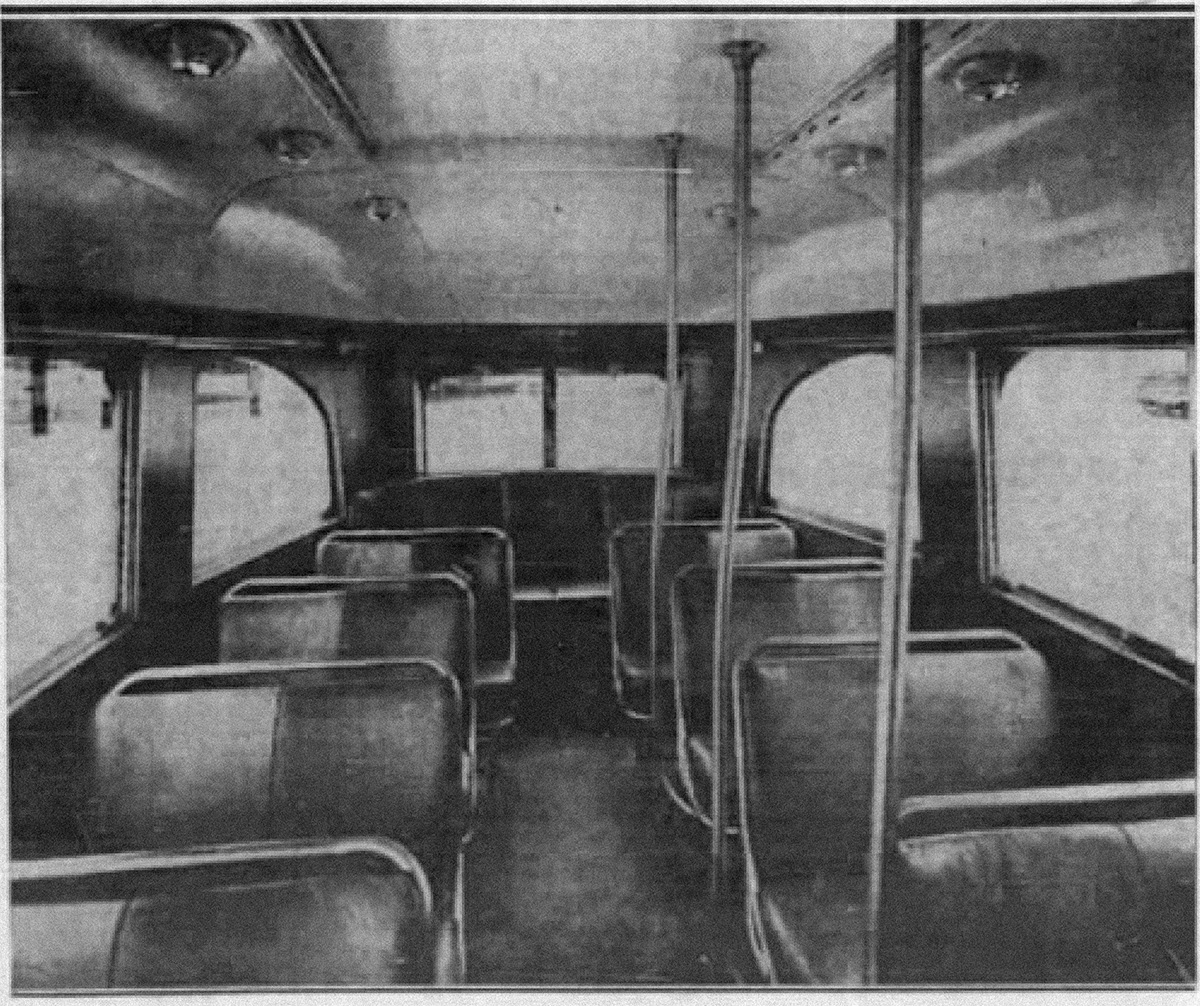
Shirley was not the only star celebrating “a new era of transportation for Los Angeles” that day. Actress Olivia de Havilland, who would go on to play Melanie in “Gone with the Wind” (1939), was also very busy that day. According to another Los Angeles paper:
The Los Angeles area was entering a new era of rail transportation today. Film actresses figured yesterday in ceremonies which inaugurated shorter service in a Southern Pacific streamlined train between here and San Francisco and presented a preview of the Los Angeles Railway Company’s new streamlined street car.
Olivia De Havilland helped send the new Southern Pacific train northward. It left at 8:15 A.M. and arrived at 6 P.M. Another was run from San Francisco here.
Shirley Temple raced up and down the rubber-cushioned corridor of the new street car, of which more like it are promised. It is comparatively noiseless and carries sixty-one passengers. The car was to be exhibited further today and “unveiled” in front of the City Hall.
From the X account of Eric Dunn comes this photo of Olivia getting ready to christen the train:
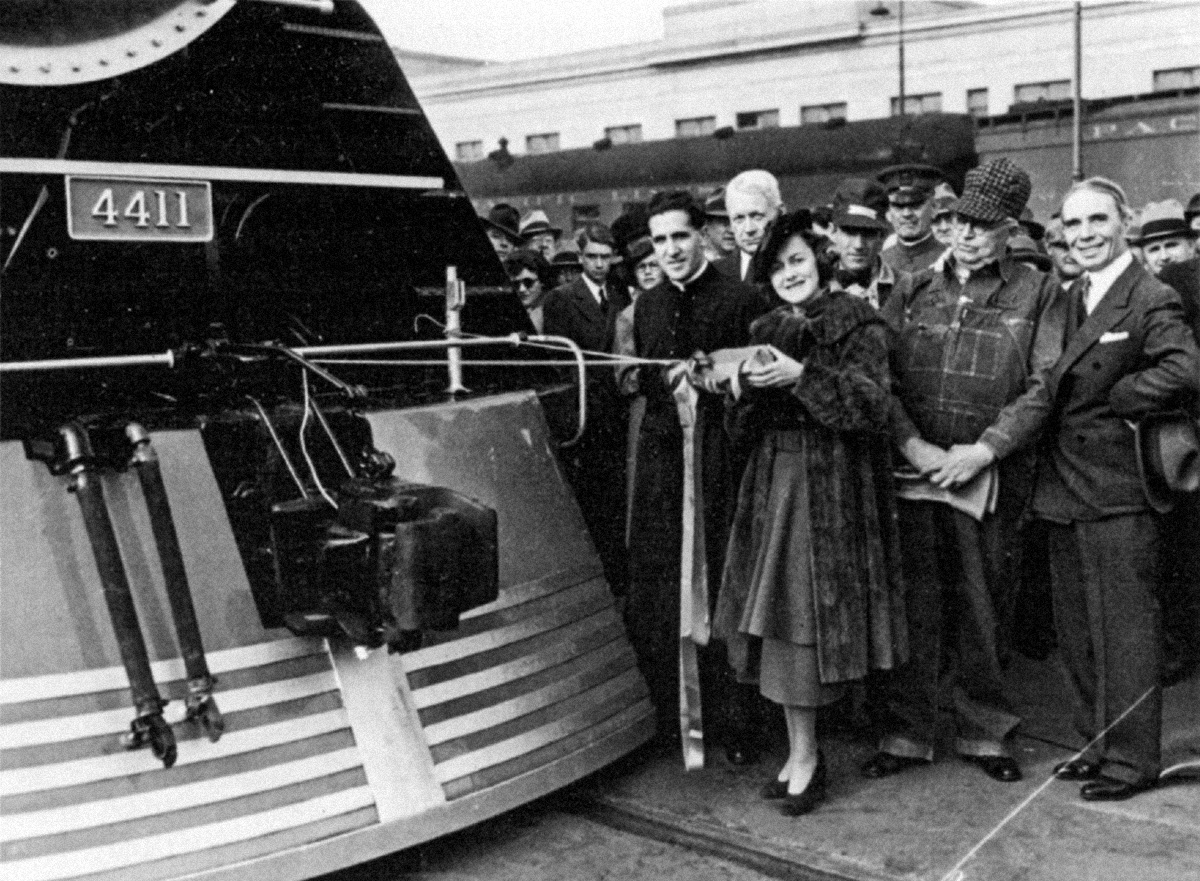
From the Los Angeles Times:
More than 1000 spectators witnessed the departure, which was preceded by colorful ceremonies. The streamliner was christened by Olivia D. Havilland, film actress, and formal wishes for a safe journey were offered by Reverend Father Joachim de Prada, C.M.F., of San Gabriel Mission. Others participating included Vice-President Felix S. McGinnis of the Southern Pacific, General Passenger Agent Henry P. Monahan, Supt. C.F. Donnatin, Engineer W.W. Judy and Conductor Alfred Meredith. Simultaneous ceremonies were held in San Francisco as the companion streamliner departed for Los Angeles. On its arrival at 6 p.m., the incoming train was greeted by Miss Lorene Dyer, daughter of J.H. Dyer, vice-president, after President A.D. McDonald, who headed a heavy passenger list, had dedicated the rail flyer to intercoastal service.
The Daily News reported:
Olivia de Havilland, film star, broke a bottle of California champagne over the giant locomotive in the inauguration ceremonies. At the same time similar ceremonies at San Francisco sent the other “Daylight” speeding south. At 9 p.m. the Lark left on a new 12-hour schedule to San Francisco and the Sunset Limited left at 8 p.m. for a new 12-hour 10-minute run.
And now, back to the reason for this follow-up post. I recently acquired this color image of the 3002, the same streetcar that Shirley christened. Dated March 29, 1963, it was taken as these cars were experiencing their final journeys just before being “retired.”
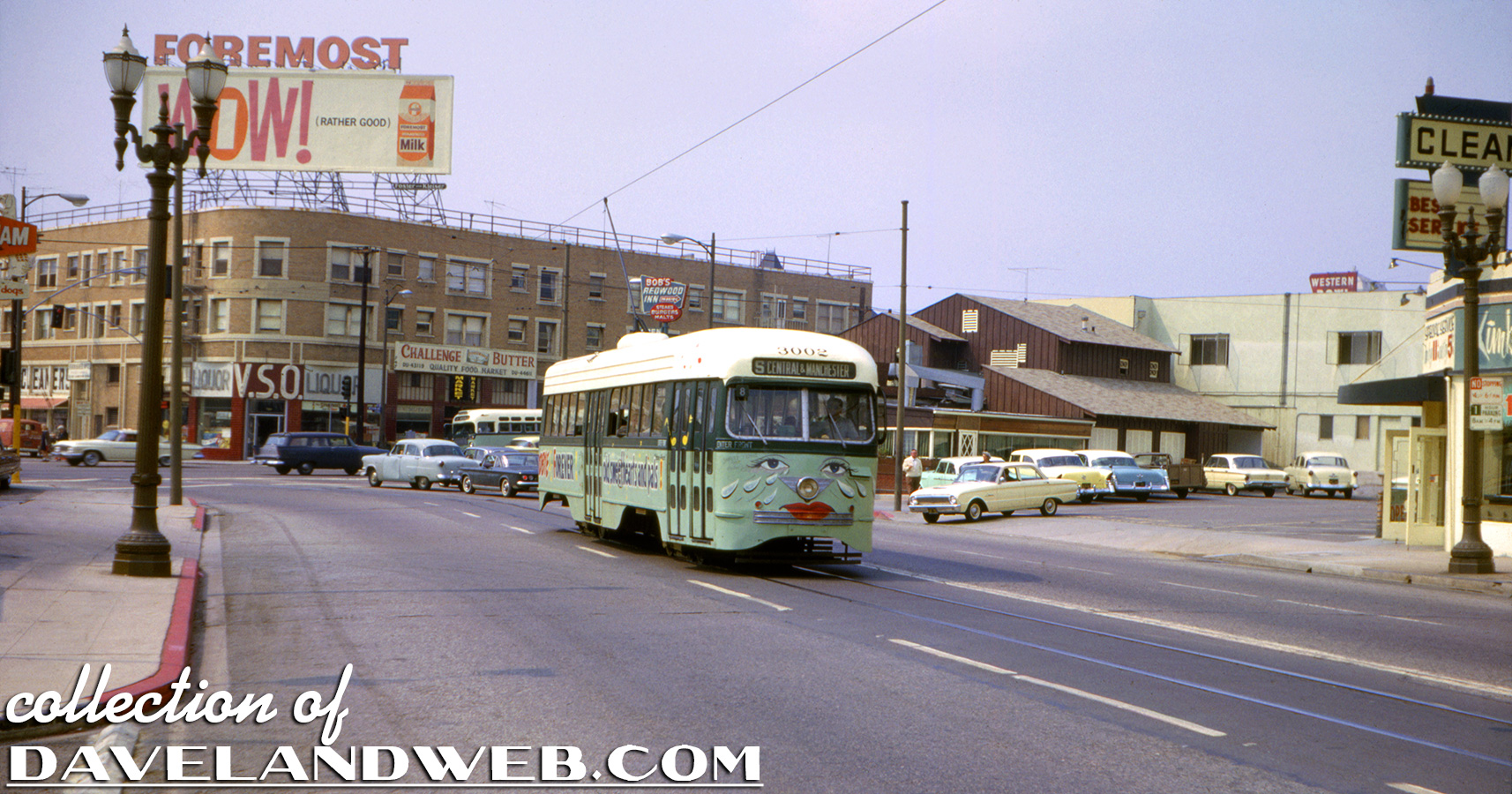
If you look below the “ENTER FRONT” sign, you can see “Shirley Temple 1937.”
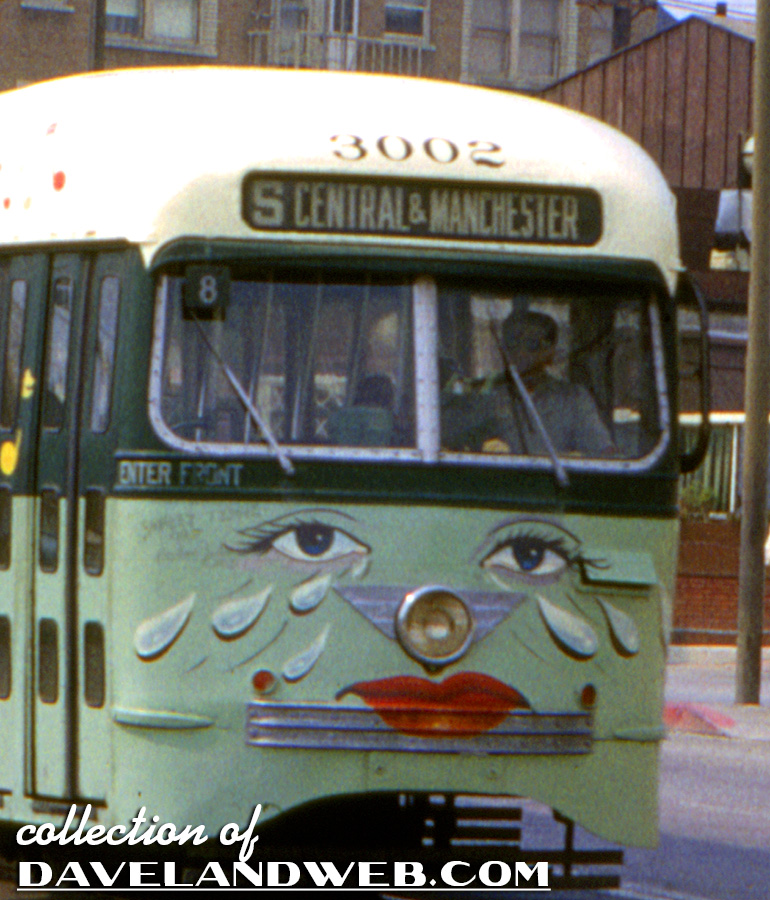
From the Press-Telegram, March 22, 1963:
March 31 is the day the last of the big yellow streetcars will come clickety-clacking, twanging its power pole, into the Metropolitan Transit Authority yards on Georgia Street in downtown Los Angeles.…Even the almost noiseless, harmless-seeing trackless trolleys-buses that run on overhead electricity—will disappear. They and the streetcar have received the verdict: Not efficient, not flexible.…The bus slipped in its opening wedge in 1940, when a new type of 45-passenger diesel became available.…What will become of the retiring 164 streetcars and 89 trackless trolleys? A spokesman said that by law the Metropolitan Transit Authority, as a public corporation of the state, must put them up for bid. The streetcars are narrow-gauge rather than standard, and only three places in the world have tracks that will accommodate them — Mexico City, Korea and Spain. If these places don’t buy the, the spokesman said, they’ll probably be sold as junk.
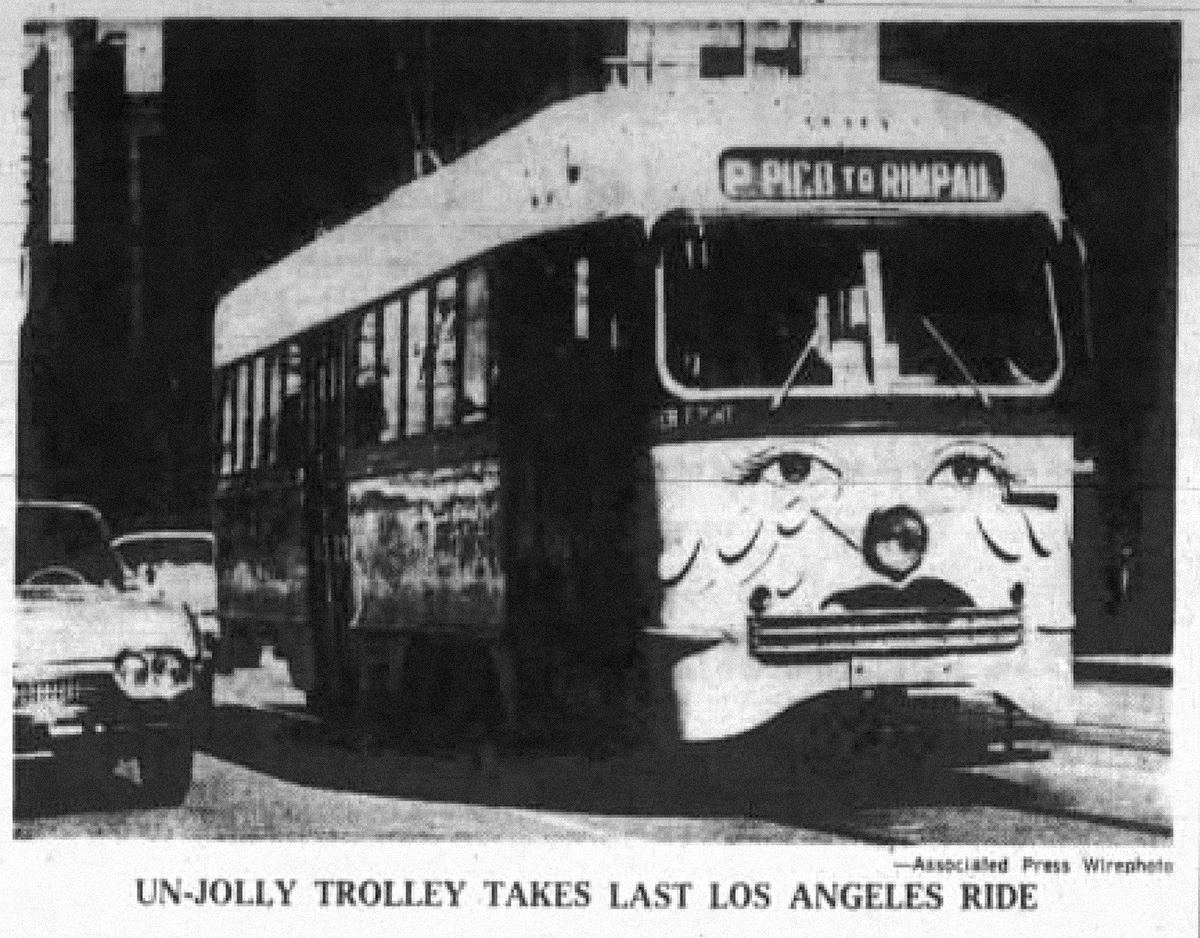
The “Crying Trolley” that Shirley christened was the one featured in photos, but strangely enough, the actress was not mentioned in any of the accompanying stories, such as this one from the Lincoln Heights Bulletin-News on March 28, 1963:
MAKING WAY FOR PROGRESS—Los Angeles’ “Crying Trolley” is leading 163 other streetcars, plus 89 trolley coaches, on their final week of service for area commuters. Singing a final swan song to a closing era, the “Crying Trolley” — Streamliner 3002 — was the first modern streetcar to operate in the area, making its first Los Angeles run in March 1937. For its final routing the “Crying Trolley” bears tears streaming from its eyes and the sentiment: “Goodbye forever old sweethearts and pals.” The farewell on the rear reads, merely “So long.”
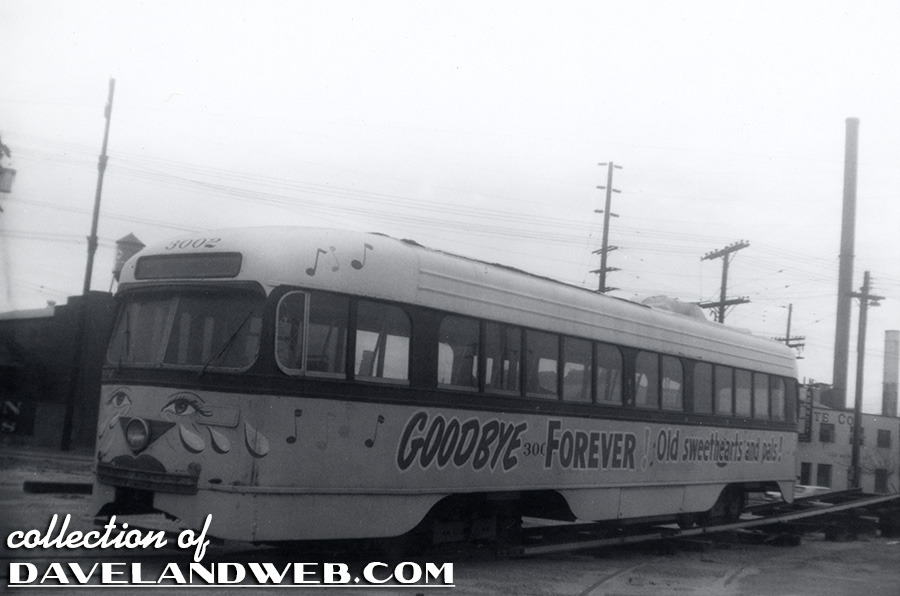
Waving goodbye in the photo below is Barbra Julian, Miss Greater Los Angeles Press Club, while George Goehler, MTA superintendent of transportation, wipes away the tears. The Press Club will stage a “Trolley Wake” March 30 as a final tribute to the streetcars and trolley coaches and as a welcome to 300 new SilverLiners going into service on the five MTA streetcar lines and two trolley coach lines, including the P and R lines.
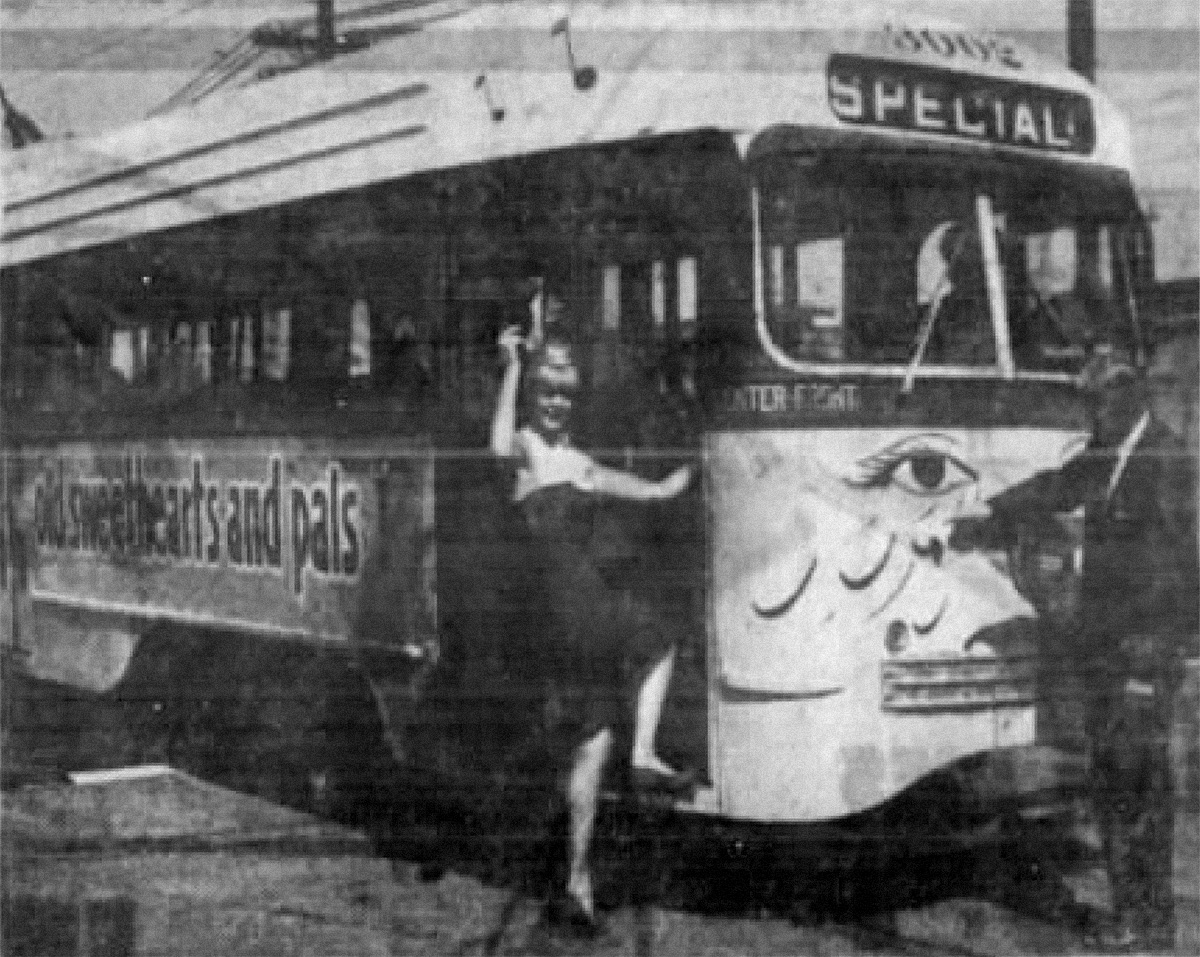
I think it’s fairly safe now to deduce that Shirley’s name on the bus was not written by her, but rather a tribute by someone who remembered that she was part of the original ride back in 1937, and added at the same time as the eyes, tears, and farewell messages.
On March 31, the Times reported this:
Wake Held at Press Club for Streetcar
More than 200 mourners gathered at the Greater Los Angeles Press Club Saturday night to observe solemn last rites for the streetcar. A part of the Los Angeles transportation system for 90 years, streetcars, and their first cousins, trolly busses, were to be off the streets by 6 a.m. today. Their heirs will be a modern fleet of busses dubbed “Silverliners” by the Metropolitan Transit Authority. Saturday night’s rites were simple. After a cocktail party “wake,” the mourners assembled at a buffet dinner. A eulogy to the noble streetcar was delivered by veteran actor Reginald Denny. Denny said he had come to bury Trolley, not to praise him. But he went on to laud his old friend and describe him as a “victim of progress because he was taking up too much room.” A lily was tearfully placed on a streetcar model and the mourners took a last sentimental journey from the club to the old Georgia St. car barn. They returned by bus.
While looking for info about Shirley and the 3002, I happened upon this little tidbit about her mother, Gertrude, from the same time period:
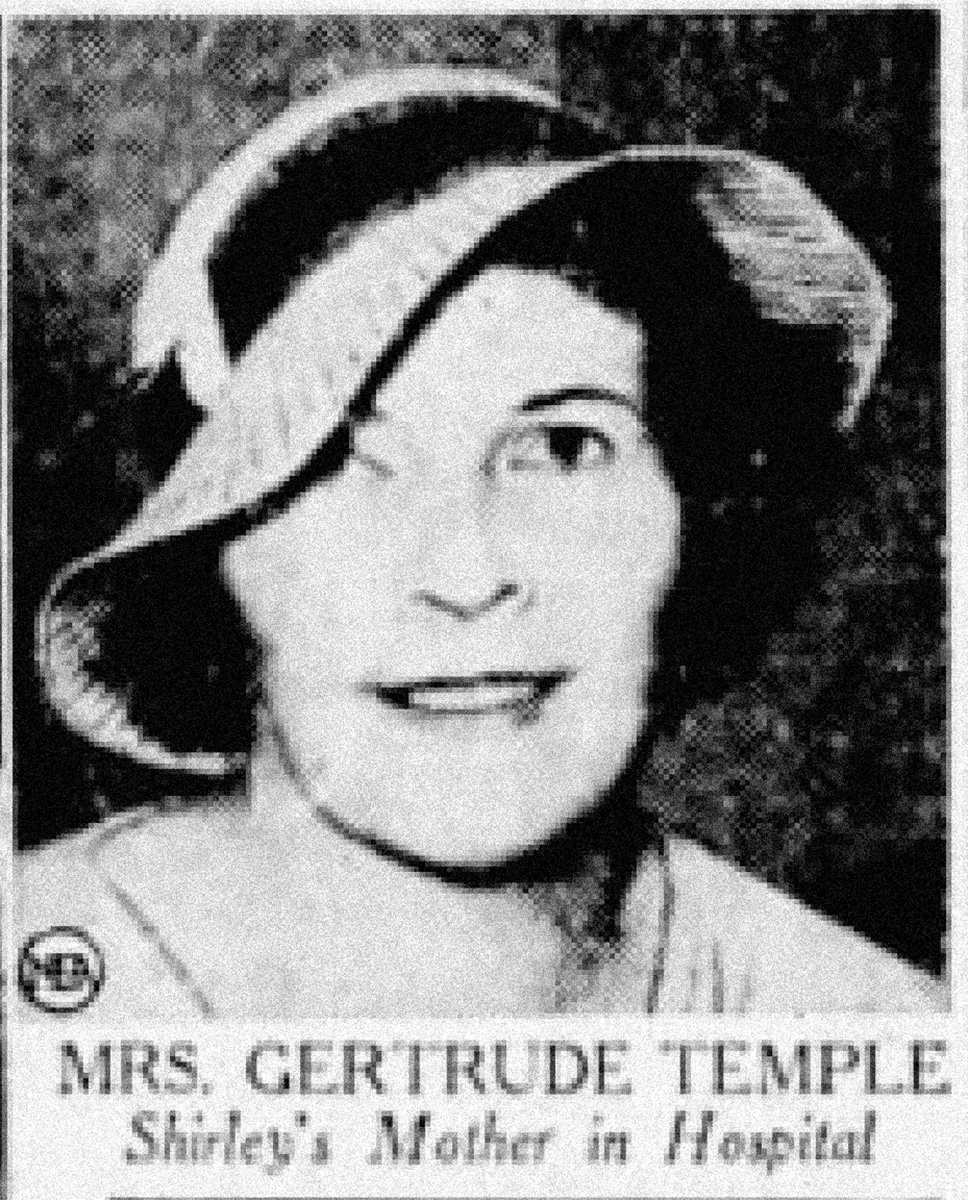
March 24, 1937:
Mother of Shirley Goes to Hospital
HOLLYWOOD, March 24 — For the first time in her life, Shirley Temple, child film star, today will be separated from her mother, Mrs. Gertrude Temple.
Mrs. Temple is to enter a hospital for an abdominal operation, described by doctors as “necessary but not serious.” She is expected to be in the hospital for two weeks.
March 25, 1937:
UNDERGOES OPERATION
Santa Monica, March 25 — Mrs. Gertrude Temple, mother of Shirley Temple, child film star, underwent an abdominal operation today in the Santa Monica Hospital. Her surgeon, Dr. Leo Madsen, said she should be able to leave for Palm Springs in about two weeks for convalescence.
Shirley touchingly shared her mother’s illness in her autobiography, Child Star:
Her typical optimism had been shaken by whatever her medical prognosis was. Either swept up in the drama of illness, or worse, death, she laid careful plans for transfer of her maternal responsibilities. As for my professional career, the studio would have to look after that phase, she wrote. “It’s Shirley as a human entity that worries me…how extraordinarily patient she is…her well-developed sense of justice…a joyous spirit, full of pranks and teasing. Tenderness, warmth, and sensitivity, these are the qualities I want to see guarded and developed.” Dwelling at length on the probability that I would continue to be making films, she expressed grave concern. “Unless surrounded by love and loyalty, any career child is at a tremendous disadvantage. She has to develop extraordinary resources within herself against greed, selfishness, and flattery. I’ve done my best to lay a foundation but the process must go on.” Candidates as proxy mother included grandmother Maude, but this Mother rejected on two counts: first, Maude was already growing too introspective and morose, vivid contrasts to my outgoing personality. Secondly, she was entitled to the serenity of old age, unlikely with me in her custody. The final choice was an old and intimate friend, Fay Ferguson, wife of Father‘s colleague years before at the bank. Unfailingly feisty ad ebullient, Fay shared with mother a catlike wisdom about life. Both were self-contained, watchful, and patient. The evening before Mother was to be admitted to Santa Monica Hospital, I stole beside her as she stood staring up at some books on our library shelf. Slipping my small hand into hers, I asked what was wrong. Nothing, she replied, tightening her lips in a thin smile, but pointing at her stomach, a gesture both nonspecific and ominous. “Don’t be afraid, Mummy,” I told her. “God will take care of you.” For the next two weeks gloom settled on my shoulders. Shooting went on as usual, with Fay doing her best to fill in for Mother, but around home everyone spoke in subdued voices.…After two weeks in the hospital she returned, wan and weak, but apparently repaired from something found to be benign. Once again we exchanged our good-night kiss, this time at her bedside instead of mine. I cried harder and longer than on the night she left. In every way the dominant pillar of my young life, she merits and receives my lifelong adoration, deep and indestructible.
Below is a shot of Shirley and her parents at the “Wee Willie Winkie” premiere on June 29, 1937:
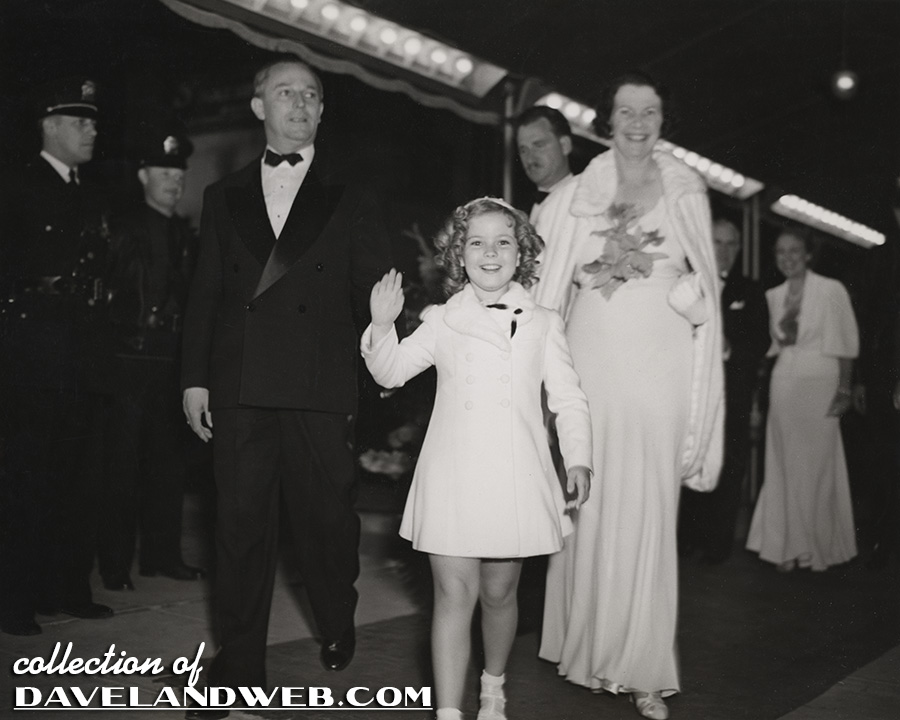
From transportation to the illness of her mother, another rabbit-hole has been completed.
See more Shirley Temple photos at my main website.

7 comments:
That is unreal to read about cushioned seats and glareless glass. These were miracles in 1937 but by the time I was riding a bus to school, they were antique ideas, and commonplace. ( and worn down ) On that third shot I really thought that was Charlie Chaplain on the end. I guess not, he wouldn't look like that for another 40 years. It's a shame they didn't invite Shirley for the photo-op with the same car she christened 26 years earlier. Although I mostly agree with replacing those trolleys with busses as it favors existing infra, it's odd that trolleys would come back ( at least in San Diego ) decades later. Not comparable, other than those faux-leather seats and glareless glass that attract graffiti like a magnet.
Pico and Rimpau was a 'bus to street car' transfer station located at W. Pico Bl. and S. Rimpau Bl., naturally. It was adjacent to a multi-story Sears store that also featured Roof Top Parking to accommodate a portion of its shoppers' vehicles, for those not traveling by street car.
Here's a 'today' look at the intersection seen in the color image: Western Ave & W. 8th Street... LOOK HERE.
Nanook - You are awesome! Thanks for sending the current day view!
Very cool, thanks Nanook. What would the Sears have been? The three story brick on the corner? Maybe it was razed and is one of the single story lots around it? Just curious since the idea of rooftop parking intrigues me. Cars may have weighed less, but were the buildings ever made to withstand it? How about that station? I'll take a guess that it's the triangular piece of land where the Pollo restaurant is but I have no idea.
@ Fithrider-
As I recall, it was a four story building. LOOK HERE. AND HERE. And also HERE.
You can see the ramps up and down to that 'rooftop parking', and the rather elaborate parking layout up top-!
And another one.
Post a Comment